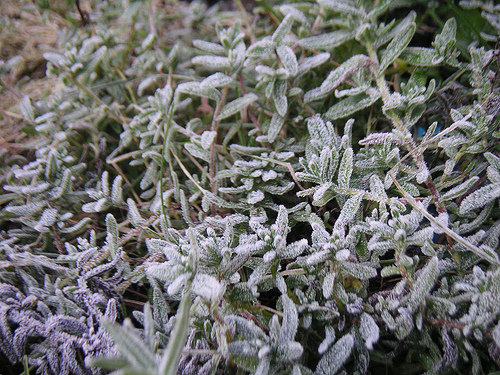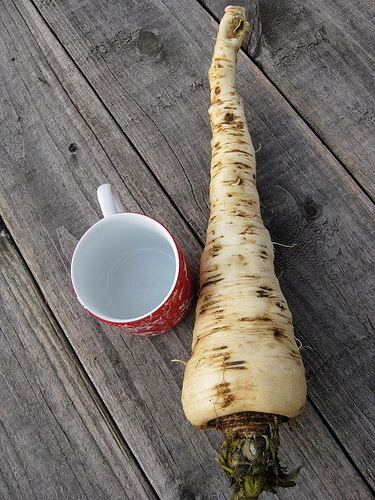-

Erin Donahue -

Christina Barkanic -

Brittany Trott -

Emily Wiley -

Jessica Reilley -

Chris Raines -

Will Nichols -

Emily Reddy -

Michele Marchetti -

Michele Frank -

James Gherardi -

Kit Henshaw -

Christina and Erin -

Kim Tait -

Erin McKinney -

Steve Spanelli -

Sam Komlenic -

Katherine Taylor Grofic -

James Eisenstein -

Jamie Oberdick -

Anna Lombardo -

LacCreta Holland -

Tony Ricci -

Local Food Journey -

Laura Young -

Kristin Camplese -

Harrison's Fresh + Local -

Danielle Matalonis -

Kristine A. -

Linda Weaver -

Naomi Elle Schwartz -

Dana Stuchul -

Cara McShane -

Brittany Smith -

Jessica Illuzzi - Frosty
-

Jessica Paholsky -

James Sechrengost -

Brad Yeckley -

Maya Althouse -

Jordan Reabold -

Kim Chase -

Maria Bryant - Alexandrea Scott
Frost looms in the garden, but that’s not always a bad thing
Posted by Jamie Oberdick on 09/29, 2011 at 07:19 AM

Frosty scenes like this will soon be common Photo courtesy of davosmith via Creative Commons
While the weather in recent days has been more like summer, the changing leaves are a definite sign that it is autumn and gardening season is coming to a close. While much of central Pennsylvania hasn’t seen the first frost as yet, that soon will change. It’s definitely frost season.
As you can see on this State College National Weather Service page, the average date of first freeze is generally Sept. 30 to Oct. 10. There is not a lot you can do as a gardener to protect frost-sensitive plants from a hard freeze, but if you are like me, you want to do your best to try to coax as many growing days out of the year as possible. For example, I have some peppers nearing harvest size that I would like to get, along with some tomatoes, and I don’t want to give up on getting them just yet.
So, if the forecast is for 33-36 and calm/clear conditions, frost can form. You can do a few things to protect your plants, but the easiest is simply to cover them with a tarp, a sheet, anything that will prevent frost formation. Once the temperature gets above 36 in the morning, you can remove the sheet.
Keep in mind that most of the “cool season” crops you are growing in the fall are frost hardy. Do a bit of research to find out what can handle a light frost. Some plants, like broccoli, cabbage, lettuce, peas, etc. can take a light frost and keep on going. There are even plants that can handle freezing temperatures. Tatsoi, a very tasty Chinese mustard green, can handle temperatures as low as 15 degrees! I have also harvested things like green onions, tatsoi, parsley, parsnips, and others while there is snow on the ground.

The parsnip’s sweet, delicious flavor is enhanced by frost, so it pays to wait to harvest until after first frost.
Believe it or not, some plants like Swiss chard, cabbages, parsnips, carrots, and salsify actually taste better after a frost, due to increase in natural sugars making them sweeter. You can even leave parsnips under mulch and harvest them in the winter if the ground isn’t frozen. They taste fantastic.
A final note on frost - pay attention to weather forecasts to help you make determinations if you want to protect your garden. You can go to the National Weather Service State College site and then type in your zip code to get a local forecast, including frost advisories and freeze warnings when they are issued.
However, there are such a thing as microclimates - generally lower areas are more at risk to frost, such as valleys and even lower portions of your property. It really can be that localized. A good idea is to take note on colder mornings where frost is thickest, then plan accordingly. If you see frost in your property and not much elsewhere, you live in a microclimate favorable to frost formation. If you note nearby areas have more frost than you do, then you are not at as much risk. Still, if you really want to save plants, better safe than sorry.
With all this in mind, a quick glance at the weather forecast for this weekend says we may be at risk of frost, so plan accordingly, and stay warm.
![]() Author: Jamie Oberdick
Author: Jamie Oberdick
Bio: Editor, Local Food Journey | Passionate about supporting local food in Central PA
- Our Local Food Journey comes to an end
- Winter isn’t a quiet time at the farm
- Get the taste of garden season right now by growing herbs indoors
- All you need to know about PASA’s Farming for the Future conference









NO COMMENTS